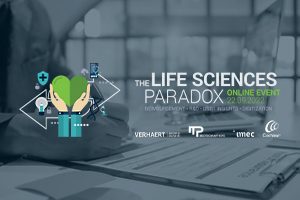Some define a most valued product (MVP) as the first iteration of a product or the most simplified version of a product. It is that definition of the product that allows you to get to the market with the least development effort, the fastest, and the cheapest. Why does that not make sense?

Defining the MVP
We’ll start with a quote from the pitch of Patronus Health: ‘You wouldn’t run a marathon without training?’. In the same way you wouldn’t start a marathon sprinting. Pace yourself and be prepared to overcome hills or mountains. This requires training and continuous discipline. If bringing a medical or diagnostic device to the market was like running a marathon, then implementing the necessary regulations needs more preparation and dedication than ever before. Even more so with both in-vitro diagnostic regulation (IVDR) and medical device regulation (MDR).
Originally, Frank Robinson defined MVP as the right-sized product for your company and your customer. It should be sufficient to cause adoption, and satisfaction and ultimately drive sales. The most valued product is the product with the maximum ROI, over-development risk, and effort. More recently, MVP gained popularity due to Eric Reis’s Lean Start-up methodology wherein he describes it as that version of a new product that allows a team to collect the maximum amount of validated customer learning with the least effort.
In light of software products or products in less regulated industries, like consumer app development, this is a product that can be put in the marketplace. However, that’s not the case for the highly regulated industry of medical & diagnostic devices. Even more so with the IVDR and MDR industries. Here, product life cycles are at least 10-fold longer and even marginal small updates result in significant costs. Larger product iterations are simply out of the question.
Alternative routes
Luckily many roads lead to Rome, hence we should look at alternative routes. Routes that provide us with the confidence that our future product results in the wanted adoption, satisfaction & sales. It requires a diligent approach to validate customer desires. A diligent approach as we aren’t only looking at their desires now. We’re also looking at how they may change in the upcoming months and years. We need to anticipate a longer time-to-market due to the overwhelmed notified bodies and the stringent regulatory requirements.
Instead of considering this a constraint or an external force that limits innovation, we regard this as an opportunity. An opportunity to thrive towards a most valued product. A defined system, a platform, and a service. That all have been validated diligently, through appropriate market studies. Through tangible mock-ups, contextual inquiries, megatrends, formative evaluations, and optimizing impact. An impact on the end-user, the clinician, the IT department and payers.
A most valued product should be elegant, and simple in use. It should create an experience, change the paradigm in its core desired and add value.
Looking for more insights on (smart) life sciences? Check out our other blog posts and perspectives.




